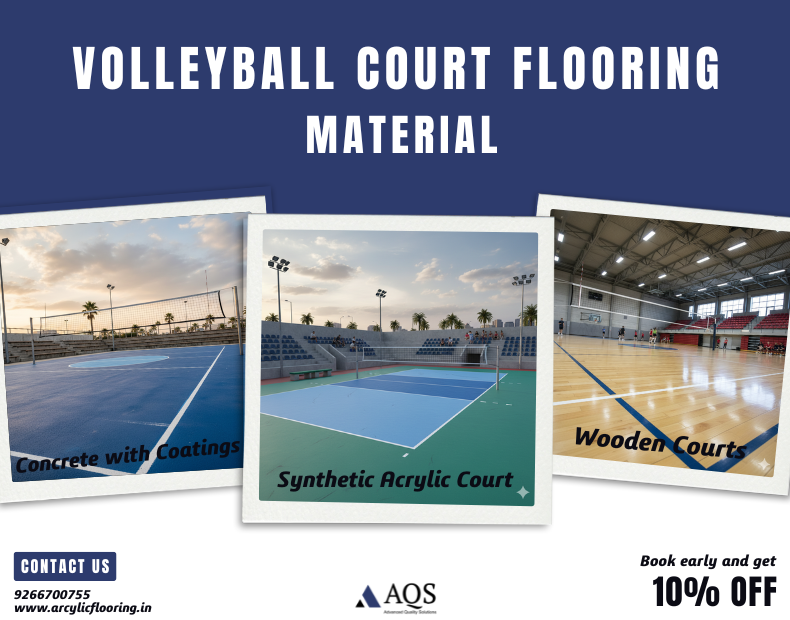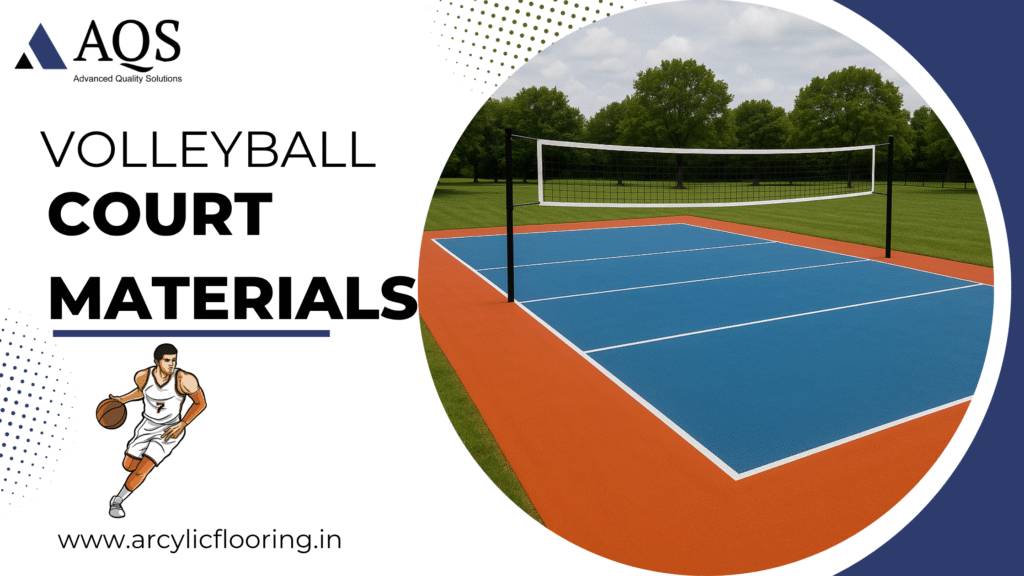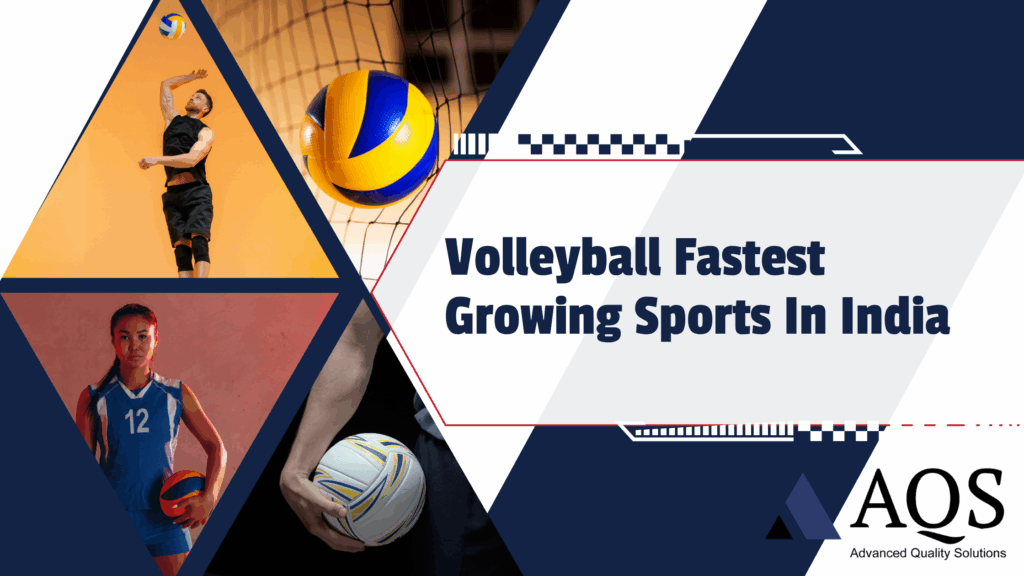Volleyball is more than just a sport, it’s a game that brings people together, gets you fit and creates community spirit. Across India, schools, housing societies, sports academies and clubs are investing in well built volleyball courts that can host casual matches and competitive tournaments. But here’s the truth: the quality of play and safety of athletes depends heavily on the volleyball court construction and volleyball court material used. When someone searches to build their own volleyball court, they are ready to take the next step in creating a space where athletes and viewers can play the game. But building a court is not as simple as drawing lines on the ground.
This blog is a complete guide on how to build your own volleyball court, covering every step of volleyball court construction, choosing the right material and understanding the construction cost. Whether you are planning for an institution, a community or even your own backyard, this guide will help you make informed decisions.
Why Invest in a Proper Volleyball Court?
Building a volleyball court is more than just putting up a net and drawing lines. The type of volleyball court flooring and volleyball flooring material used matters a lot. Here’s why:
- Player safety: A good volleyball court must protect players from injuries. Using the right volleyball court flooring material makes sure good grip, cushioning and slip resistance. This reduces the chances of falls, sprains or joint strain especially during fast movements and jumps.
- Durability: High quality volleyball flooring material makes sure the court can withstand continuous play without wearing out fast. A durable surface stops cracks, fading and uneven patches even with heavy usage in schools, clubs or housing societies.
- All weather performance: For outdoor volleyball court flooring, the surface must perform well in extreme heat, heavy rain and dusty conditions common in India. Synthetic and outdoor volleyball court flooring material like acrylic systems are designed to resist UV rays, quick water damage and slippery conditions so the court can be used throughout the year.
- Consistent play quality: The game experience depends on reliable bounce and stable footing. A poorly constructed volleyball court surface can create uneven ball movement or slippery patches.
A professionally planned construction of the volleyball court makes sure the surface remains strong, safe and enjoyable for years.
Volleyball Court Construction Details
Standard Dimensions
- Court size: 18 meters long and 9 meters wide is the standard size for a volleyball court and meets international guidelines for training and competition.
- Side Space: 2 meters minimum around the sidelines. This extra space stops injuries, allows players to dive or chase the ball safely and moves smoothly without disturbance.
- Net height: Men’s and women’s volleyball have different net heights. Men’s is 2.43 meters and women’s is 2.24 meters. Adjusting the net height makes sure fairness and the right level of challenge.
Key Steps For Construction
- Site Preparation:The first step in build your own volleyball court is site preparation. This involves clearing the area, leveling the ground and compacting the soil for stability. A slight slope is created to support water drainage and stop waterlogging during rains.
- Base Layer: Builders use either concrete or asphalt base for stability. Proper curing of the base is important to stop cracks and make sure a long lasting foundation for the volleyball court flooring material.
- Application of Flooring System: The process starts with a primer that helps other layers stick to the base. A resurfacer is then applied to smoothen the surface. Optional cushion coats can be added to reduce strain on players’ joints.
- Accessories: After the flooring is done, finishing touches are added. These include installing net posts and boundary lines. For outdoor volleyball courts, fencing is added to keep the ball in play and lighting to continue play after sunset.
Choosing the Right Volleyball Court Flooring Material

The performance and lifespan of any volleyball court depends heavily on the volleyball court flooring material. Choosing the right one makes sure player safety, durability and cost effectiveness. Here are the most trusted options for volleyball court construction:
1. Synthetic Acrylic Volleyball Court
A synthetic acrylic volleyball court is the most popular choice especially build your own volleyball court flooring. Its multi layer system is designed to withstand India’s harsh weather conditions, intense sunlight, UV rays and heavy rains.
2. Concrete with Coatings
Concrete volleyball courts are strong and stable for both indoor and outdoor volleyball courts. But plain concrete alone can be hard, unsafe and unattractive for players. To make it playable an acrylic topcoat is applied to improve aesthetics, add colors and create a non-slip texture.
3. Wooden Courts
For professional tournaments and indoor stadiums wooden volleyball courts are the premium option. They provide excellent ball response, shock absorption and playability that athletes prefer at competitive levels. But wood is highly sensitive to moisture and weather, making it unsuitable for outdoor use.
Volleyball Court Construction Cost
Volleyball court cost depends on several important factors that control durability, performance and usability of the volleyball court.
- Court Size: A full size volleyball court requires more space, base preparation, flooring material and labor which increases the overall cost. A practice court is more budget friendly and is preferred for schools, housing societies or private homes with limited space.
- Base: The base is the foundation of any court. Asphalt bases are slightly flexible which reduces the chances of cracks but are costly. Concrete bases are more common in India due to easy availability and affordability but must be designed with proper joints and curing to stop damage over time.
- Material Quality: The choice of volleyball court flooring material plays a big role in cost. High grade acrylic or synthetic flooring requires a bigger initial investment but offers better grip, weather resistance and longer life span, reducing resurfacing cost in the long run.
- Layers Added: Adding cushion layers in the volleyball flooring enhances player comfort and reduces stress on knees and ankles making it suitable for training academies or clubs. But each cushion layer increases materials and labor costs. Which increases the total volleyball court construction cost.
- Additional Features: The core court may be affordable but add-ons like floodlights for evening games, fencing for safety or seating arrangements for viewers increases the cost. These are optional but add value and functionality depending on whether the volleyball court is for recreational or professional use.
Working with experienced volleyball court builders will give you a transparent and detailed breakdown of overall construction cost. This will help you plan according to your budget and ensure the court is built with the right balance of quality and long term performance.
Maintenance Tips for Long Life
Build your own volleyball court is just the beginning. To make sure your volleyball court flooring lasts year after year, maintenance is key. Proper care saves you long term costs, keeps the surface safe for players and looks great.
1. Sweep and Clean Regularly
Dust, dirt and leaves can quickly collect on the surface of a volleyball court flooring especially in outdoor areas. Regular sweeping or using a blower stops particles from getting embedded into the surface texture. This keeps the volleyball court looking fresh and makes sure the grip of the outdoor volleyball court flooring is effective during play.
2. Check for Cracks and Repair Quickly
Small cracks or surface damage might not seem serious at first but can get worse if ignored. Moisture and dust settles in these gaps and can expand further. Timely inspection and sealing of cracks protects the base structure and extends the life of the volleyball court flooring.
3. Reapply Color Coats Every 3–5 Years
Over time, continuous play, UV exposure and weather conditions can dull the surface colors. Reapplying top coats every 3–5 years refreshes the volleyball court’s look, restores texture for slip resistance and adds an extra layer of protection against wear.
4. Keep the Drainage Clear
For outdoor volleyball court flooring, drainage is key. Water logging can damage the acrylic layers, weaken the base and reduce playing quality. Regularly check and clean drains especially before and after monsoon season to stop these issues and make the flooring last longer.
By following these maintenance tips, your synthetic acrylic volleyball court will be durable, safe and looking great for many years without major repairs.
Why AQS is a Trusted Volleyball Court Maker
AQS is known for delivering reliable and high-performance volleyball court construction solutions across India. By using advanced systems and customer-first approach, AQS makes sure every project meets professional standards and long term expectations. Here’s why AQS is the right choice:
- Certified Materials: Every volleyball court material provided by AQS is carefully selected and certified for quality, safety and durability. The use of synthetic acrylic volleyball court materials makes sure UV resistance, strong grip and all-weather performance, suitable for outdoor applications.
- Customized Solutions: AQS designs and performance volleyball courts based on specific needs whether it’s a school playground, a housing society recreation area, a sports club, or even a private home installation. Each volleyball court is tailored in size, budget and performance features to give the best playing experience.
- Transparent Pricing: Clients get a detailed breakdown of the volleyball court construction cost, including base preparation, flooring layers, net systems, line marking and optional add-ons. This transparency removes hidden charges and helps customers plan accordingly.
- Nationwide Support: With a strong network of trained installers and partners, AQS can manage volleyball construction projects anywhere in India. From metro cities to tier-2 towns, AQS ensures consistent quality, on-time delivery and quick support for repairs or resurfacing when needed.
- Proven Experience: AQS has created multiple projects covering outdoor volleyball court flooring. This diverse portfolio shows not only technical expertise but also adaptability to different site conditions and customer requirements.
Conclusion:
Building a volleyball court is not just a construction project; it’s an investment in health, sportsmanship and community well being. A well designed court ensures fair play, minimizes injuries and withstands India’s harsh weather. From acrylic volleyball court systems to outdoor volleyball court flooring materials, the right choices at the beginning can save you years of costly repairs later.
Ready to build your own volleyball court? Make it a space that inspires athletes, encourages fitness and strengthens your community. With AQS as your trusted volleyball court manufacturer and builder, you’re not just creating a play area, you’re building a foundation for growth, teamwork and a healthier life.
Frequently Asked Questions
A volleyball court is 18m long and 9m wide with at least 2m side space.
Synthetic acrylic flooring is the most durable and weather-resistant choice for volleyball courts.
Yes, backyard volleyball courts can be built with concrete or asphalt base and synthetic flooring.
Reapply acrylic color coats every 3–5 years to maintain grip, durability, and appearance.
Proper drainage prevents waterlogging, protects flooring layers, and ensures long-term play quality.




